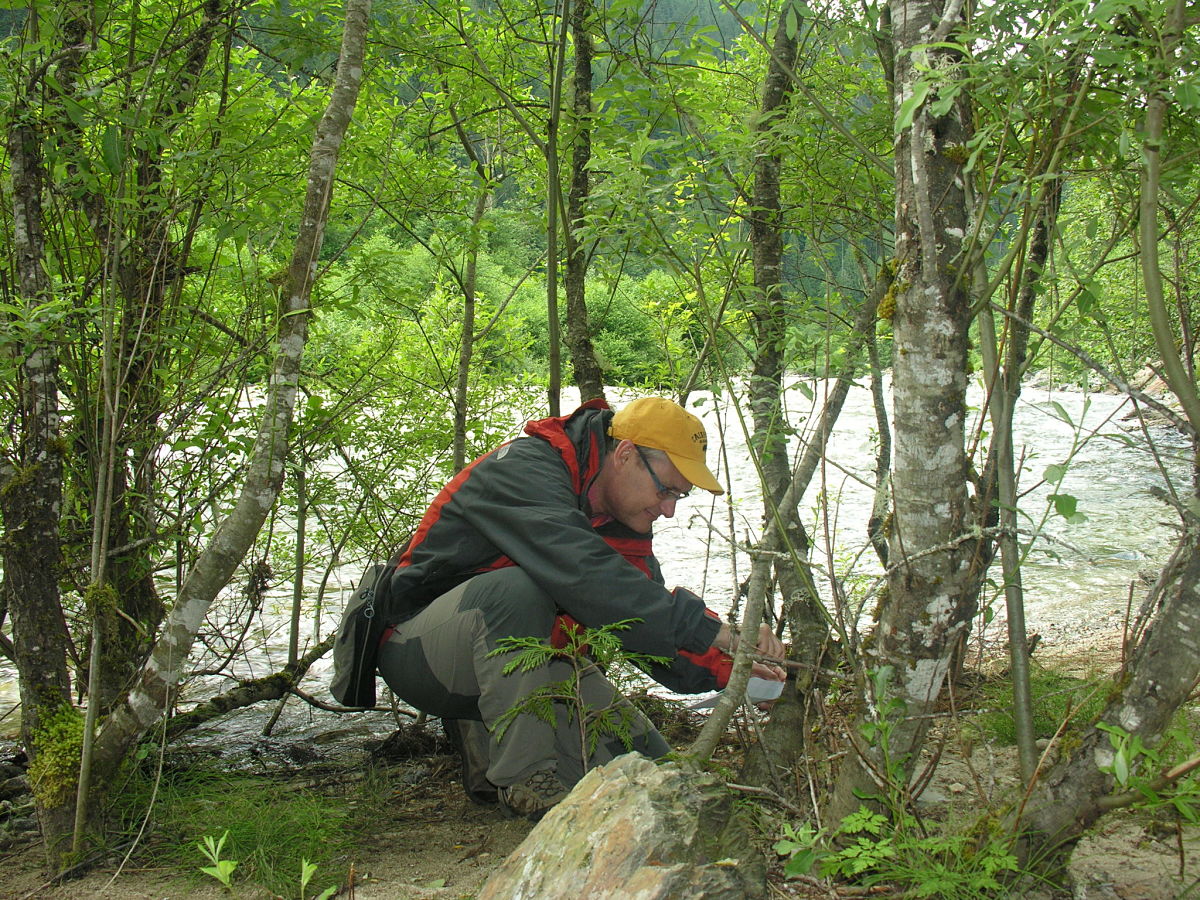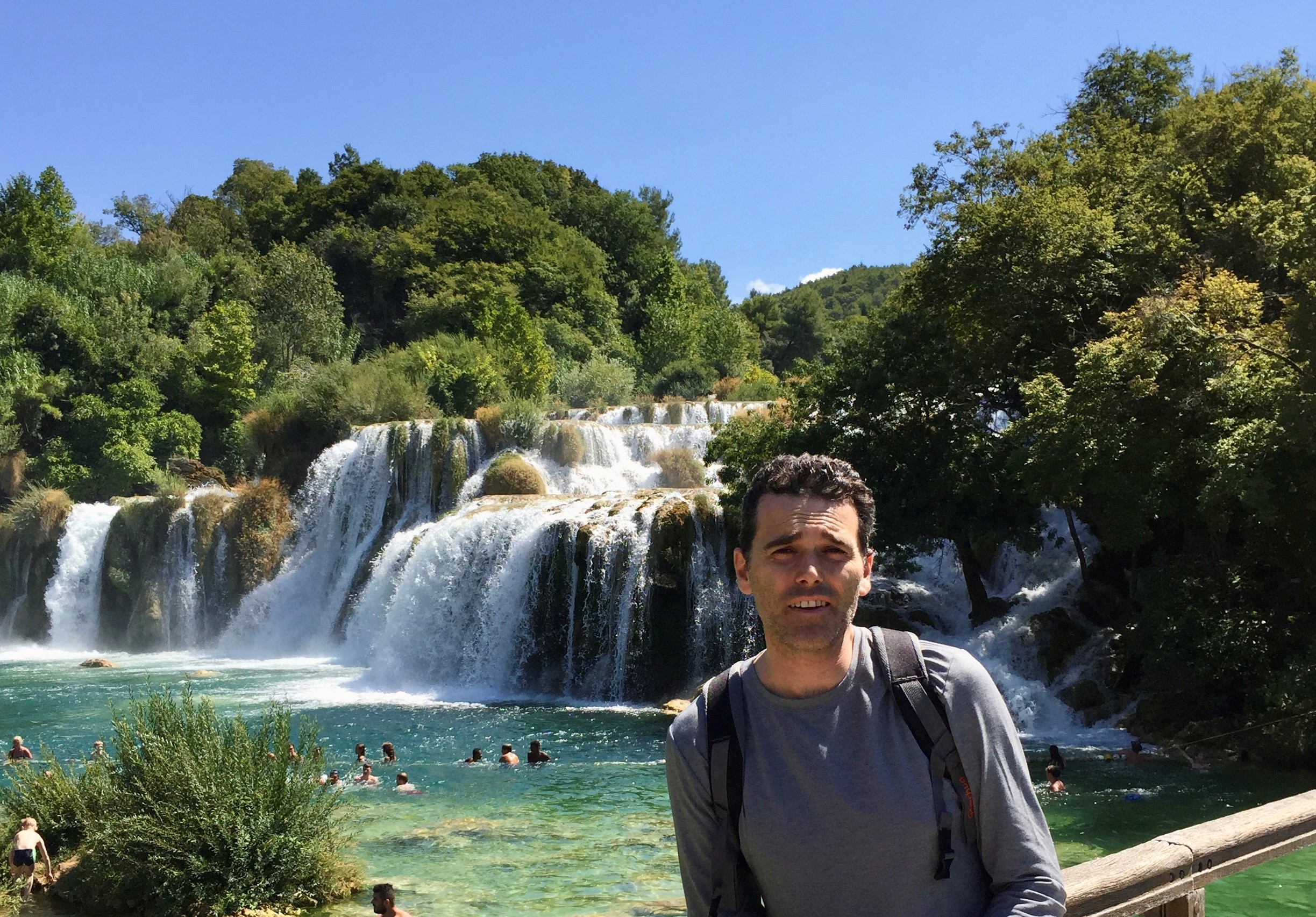Botanist of the month: Patricio García-Fayos
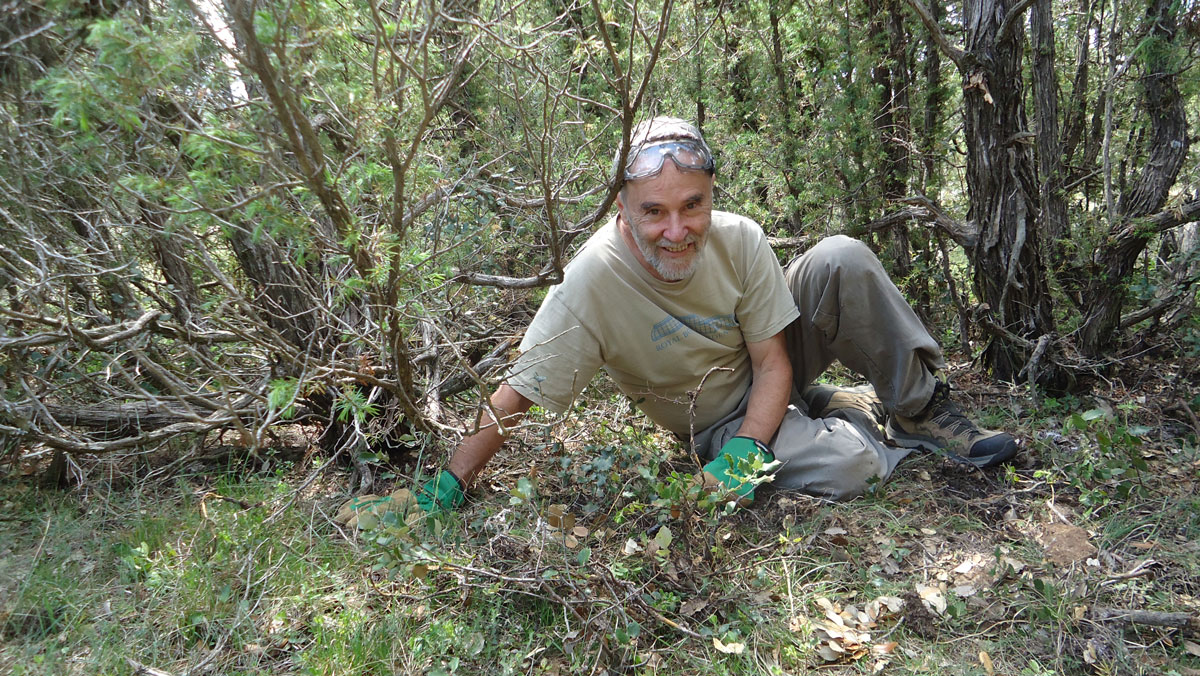
Contact with nature and the figure of Félix Rodríguez de la Fuente got him interested in animal behaviour and biology. He finally opted for Botany, a discipline from which he could also do what he liked best: establish ecological relationships. He has been able to adapt to the changes that his field of study has undergone in recent years and is optimistic about the future of the discipline. Patricio García-Fayos, researcher at the Spanish National Research Council and director of the Desertification Research Centre (CIDE) is our botanist of the month.
What attracted you to Botany?
It was a late and accidental vocation. Like many of my generation, as a child I was fascinated by animals due to direct contact with nature and the influence of Félix Rodríguez de la Fuente. When I entered university, Botany was not among my preferences and my interest was divided between Ecology and Ethology. In fact, I failed the second-year general botany course and had to repeat it. When the time came to choose a speciality, I supported a proposal to introduce the speciality of Ecology at the University of Valencia, which we did not achieve. So, the logical thing to do would have been to choose Zoology, but disagreements and disappointments with several of the professors in that speciality led me to choose Botany. I consoled myself with the thought that, at least, it would allow me to recognise the plants on which birds feed, on which they nest or perch, etc., which I sensed would be useful for establishing ecological relationships, which was, after all, what I liked. That’s what I did and I didn’t regret it. In the end I was fascinated by being able to recognise plants and their characteristics per se and to establish relationships between them and environmental factors that could explain their presence or absence. In fact, this was the subject of my degree thesis under the guidance of Rafael Currás, then professor of Ecology, who sadly passed away last March.
And since those first moments, how has your professional career continued?
When I finished my degree in June 1979, José Mansanet, head of the Botany Department, offered me a contract as a non-tenured lecturer. I was delighted to accept, although I warned him that in October I had to join the military service, but he was not to worry, because when I finished my military service he could count on me. But of course, he needed teachers for the following year, so it wasn’t to be. On my return from the military service, in 1981, together with Antoni Aguilella, we won a research project of the Fundació Alfons el Magnànim with which we tried to draw generalities from crossing the geographical distribution of vegetation with that of the environmental and biotic factors of the province of Valencia. One of these factors was the soil, so in order to obtain the necessary information, I turned to José Luis Rubio, who had been our professor of Soil Science and worked at the Higher Council for Scientific Research (CSIC).

At that time, together with Professor Juan Sánchez (UV), they were leading an ambitious soil mapping project and needed people. They proposed that I join the team and, later, that my collaboration would become my PhD. But after two years, in the absence of a salary or grant and with all the field and laboratory work finished, I prepared for and won a post as a vocational training teacher and switched from research to teaching in secondary education. Thanks to the insistence of friends and family, I analysed the data obtained and defended my PhD, which allowed me to apply for a post as a senior scientist at the CSIC in 1988, which I won. Since then I have devoted myself to research, first at the Institute of Agrochemistry and Food Technology and then at the Desertification Research Centre.
What is your current occupation?
I divide my time between the management of the Desertification Research Centre, research and a small contribution to teaching and outreach. The management of any research centre involves a lot of management and coordination to try to make it easier for the research staff to do excellent scientific work and to ensure that they have the services and means to do so. As for research, I try to keep up to date in my field and develop the projects I am involved in, which involves meetings, going out into the field, publishing, training technicians and scientists, … On a smaller scale of dedication, I also teach some undergraduate and master’s degree classes at the University of Valencia as well as lectures when I am invited.

Your speciality is soil science, what interested you in this field of study?
The fact that I am classified as a soil scientist comes from the fact that my PhD dealt with soil cartography and, since then, many of my fellow students and some authorities have considered this to be my speciality. This idea has also been reinforced because I have spent most of my career at the Desertification Research Centre, where a lot of soil mapping and soil erosion studies have been carried out. But really, if you look at the projects, theses and publications in which I have participated, directed and carried out, my activity defines me as a plant ecologist.
Are there any of the projects you mention that you are most proud of?
There are two projects that I remember in particular that have been decisive for my career as a scientist. In one of them – which were actually three concatenated under the direction of Adolfo Calvo – I began to investigate the vegetation of badland areas in the southeast of the Iberian Peninsula. The badlands are areas that have been intensely gullied and eroded as a result of lithology and geomorphology, and in the end I tried to answer the question of why they have almost no plants, of what were the factors limiting plant colonisation. With the work on mastic trees, which was actually Miguel Verdú’s PhD, I learned what the life cycle of plants is, to see them not only as a Latin binomial, a component of a plant community, or only climate, soil and use as factors that explain their geographical distribution. I began to understand that their presence or absence, ultimately their success in leaving offspring, is also due to interactions with other living things, including other plants, and with the immediate environment in which they live. The world of reproductive biology, seed dispersal, germination, evolution, etc. opened up to me.
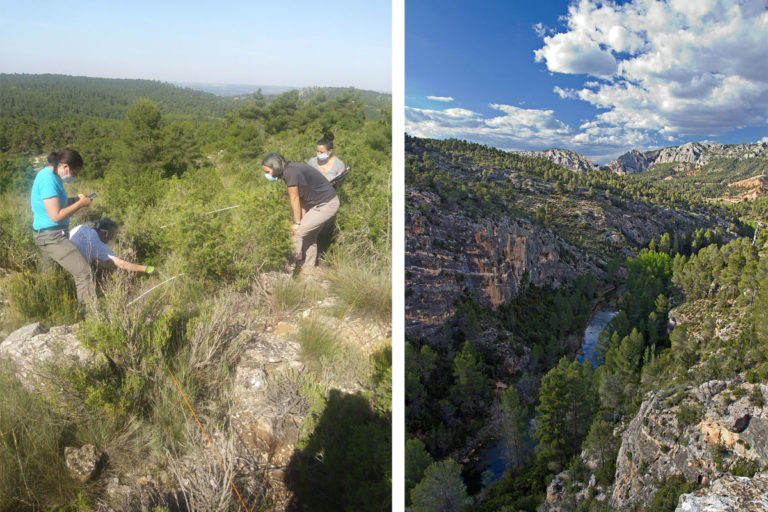
What did you learn from these projects?
Through these projects I really learned how to do research, to look for and test different hypotheses that could explain the phenomena we observed or that others or theory predicted, to look for ways to approach my own research based on what had been done in previous research, to be creative in proposing hypotheses and predictions, to lead research teams, to publish, and so on. This gave me enough self-confidence to shape my subsequent research career.
We would like to hear about your research team – who are they and how do they complement each other?
As with research topics, I have not had a closed research group of people, but have always collaborated with others. I have worked closely with geographers, geomorphologists, soil scientists, zoologists, ecologists, botanists, agricultural and forestry engineers, statisticians; and I have worked with experts ranging from reproductive biology, taxonomy, phylogeny, and ecophysiology, to animal and soil interactions. Importantly, my team has also included master’s and doctoral students, as well as technicians from intermediate and advanced levels who, in addition to direct help, have enriched me with their ideas and have made me reflect on their questions.
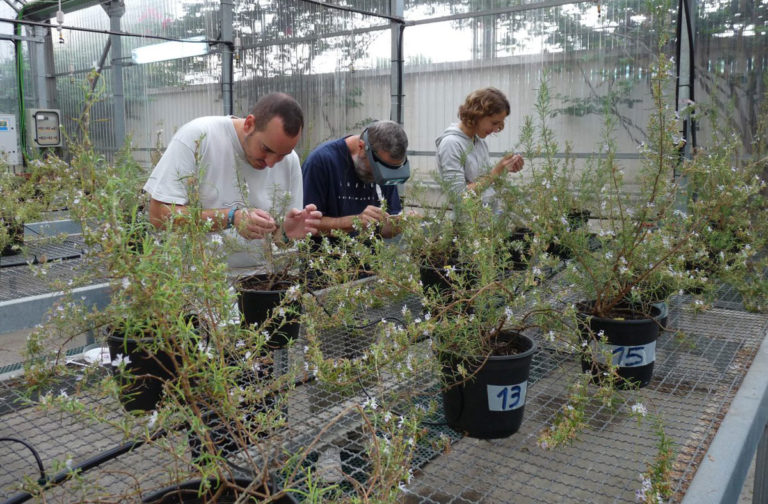
And what research project are you working on at the moment?
I am currently working on two projects. In one of them, funded by the Ministry of Science and led by Esther Bochet, together with researchers from the universities of Alcalá de Henares and Zaragoza and the US Forest Service, we are trying to determine whether the aridity induced by climate change since the middle of the last century has led the holm oak forests located in the driest areas of the Iberian System to a point of no return, both in terms of soil and vegetation functionality and from a demographic point of view, and whether reforestation with holm oak makes sense in this context. In the other project, funded by the Biodiversity Foundation and led by Francesco de Bello, together with other CIDE colleagues, CIEF staff and staff from the Natural Parks of the Valencian Community, we are setting up a network for long-term monitoring of the effects of climate change on biodiversity. For now we are limited to vegetation and soil organisms, but we are open to include new trophic groups as other specialists join us.
What impact does research like this have on society?
The results for society in the aforementioned projects are clear. In the first, it will contribute to the debate on how to manage these holm oak groves and whether it makes sense to continue repopulating with holm oaks in this territory. In the second, technicians and scientists will have a network of observatories that will allow us to monitor in real time how climate change is affecting our nature and try to understand and anticipate the changes.
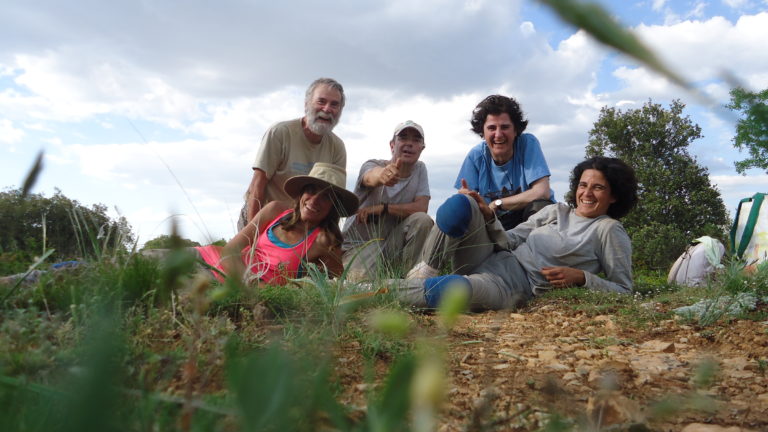
How do you think your speciality has changed over the years?
From my initial studies describing vegetation and soils, I moved on to investigate the relationships between birds and plant colonisation and between plants, soil and erosion. In some cases, this research pursued knowledge per se, and in others it pursued specific applied objectives such as, for example, understanding the limitations to plant colonisation on road slopes and mining by-products, or how to propose protocols for the collection, storage and use of forest seeds for the Servei Forestal de la Generalitat Valenciana (Forestry Service of the Generalitat Valenciana). Without intending to, all the research I was undertaking throughout my career involved working with seeds and the environment in which I was researching was semi-arid and degraded systems. So I have been focusing on understanding the mechanisms that control plant colonisation in semi-arid and degraded areas, from seed production to germination, dispersal, survival and germination, and how soil, water availability, erosion and animals interact with this. Looking back, I would say that it is not that I have changed my speciality, but that I have been linking everything I have learned and deepened my knowledge.
What is your relationship with the Jardí Botànic of the University of València?
My relationship with the Jardí began as a child playing hide and seek on summer mornings with my siblings in the Jardí. My professional collaboration began in 1981, helping in the collection and storage of seeds of wild species for the Index Seminum. Later, from the time the Jardí was developed by Manuel Costa until the present day, I have enjoyed this unique space at congresses, conferences, presentations, exhibitions, concerts, and I have even been invited to give lectures and seminars. I have also used its facilities as a meeting place for research projects in which I was involved. In addition, with all the people who have directed the Jardí since then, I have had long-standing ties with them. I am a classmate of Antoni Aguilella, Isabel Mateu gave me an internship during my degree, and I have a long-standing friendship with Jaime Güemes. And with all of them I have done research and have publications.
How would you encourage current biology students to pursue the same career as you? What qualities are needed?
I think there are many young people who love nature. That is the basis. Then you have to have the tenacity and passion to keep going in those subjects you are curious and interested in and overcome the difficulties and discouragements that always arise. And finally, you have to keep an open mind, always willing to learn, which means going to the scientific literature, not only on your own subject, and working with scientists and in groups other than the one in which you have been trained or in which you are developing your profession.
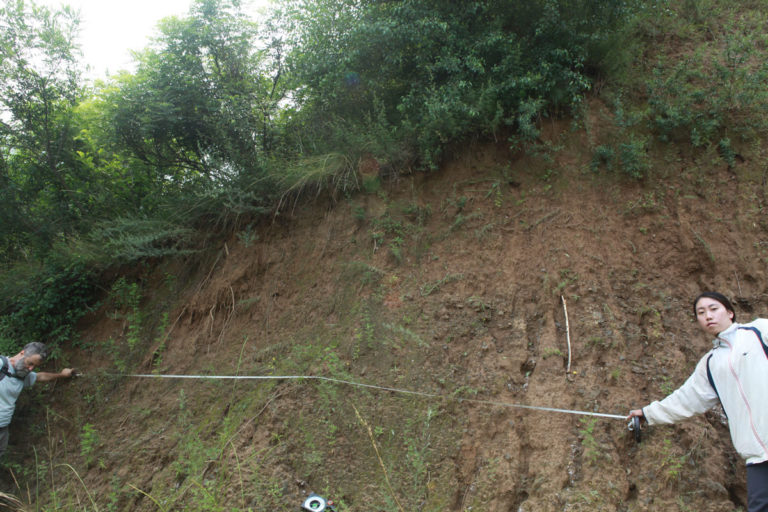
How important is outreach? In the case of desertification, for example, is there sufficient coverage?
I think outreach is really important, but at the same time I feel frustrated that we are not doing it right. Despite the urgency for our own existence of issues such as climate change and biodiversity loss, and despite the extensive media coverage, we do not manage to get these issues to break the inertia of continuing to live without giving up the level of comfort we have or pursue. It is also true that, at times, our discourse as scientists is so alarmist that it immobilises and, in other cases, the uncertainty inherent in scientific knowledge means that our message loses force. On the other hand, denialists are not ashamed or shy to take as much information as a salesman, incomplete, biased or outright lies, but which connect with the comfort of our lives and the inertia to change it. It should be our task to compensate for these shortcomings and to convince people to take action.
What does the future hold for botany?
There is a general complaint that disciplines such as botany are of less and less interest to those starting out in their careers and that they have less and less weight in the field of research. I do not think so. On the one hand, nature is still attractive to the younger generation. And, on the other hand, as history teaches us, all knowledge changes as it advances, as do the techniques with which we approach it. We only have to think of the revolution that the study of genes and their expression has meant for the knowledge of plants, or how evolution and biogeography have gained with phylogenetic tools and palaeobotany. The questions are still there and I think they will continue in the future. What we have to do is try to answer them.
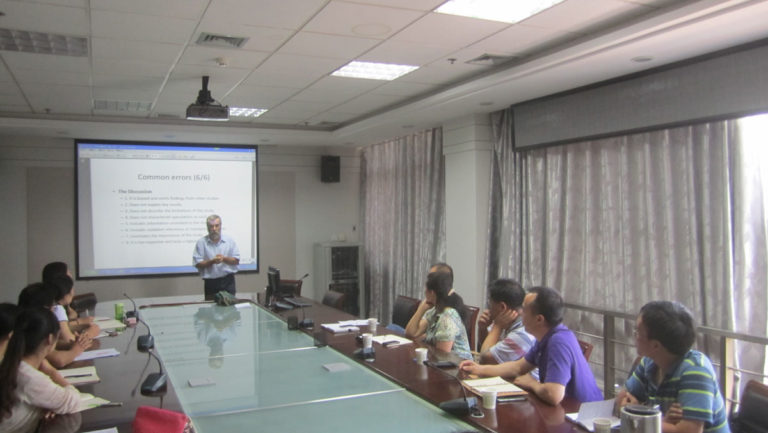
In all these years as a botanist, what is the funniest or most curious situation you have found yourself in?
I remember one afternoon in the countryside, near Cosa (Teruel). Esther Bochet and I were on a hillside with tomillar trees, first installing tapes and ropes with pegs to delimit a plot of land and then making an inventory of plants, when a shepherd who came out of a corral with the cattle about 500 m from us saw us and gradually approached us, intrigued. Finally he dared to ask us what we were doing and we told him the truth, that we were doing a study of the vegetation and the soil. But the man stared at us and told us that we were lying to him, that what we were doing was looking for gold. No matter how much we insisted, we couldn’t convince him… or get rich!
What tools do you need for your work?
For the field, I usually only need measuring tapes, hoe, paper and plastic envelopes, notebook, pencils and markers, labels and wires to mark plants, flowers and fruits. I also have a rucksack to put everything in and to move around. When I arrive at the institute I need a magnifying glass, computer for data processing and analysis, internet connection, access to bibliography, money for data analysis, germination chambers, presses, greenhouse and, especially, time!
Imagine you have as much budget as you want. What would your work be like? What things would you improve?
It is not so much a question of having a lot of money as of having guaranteed continuity of funding as long as one works well and does not sleep in the glory of the first success. All I ask is that the funding be stable, with clear rules of the game that do not depend on the current situation or the ideology of those who administer public money.







